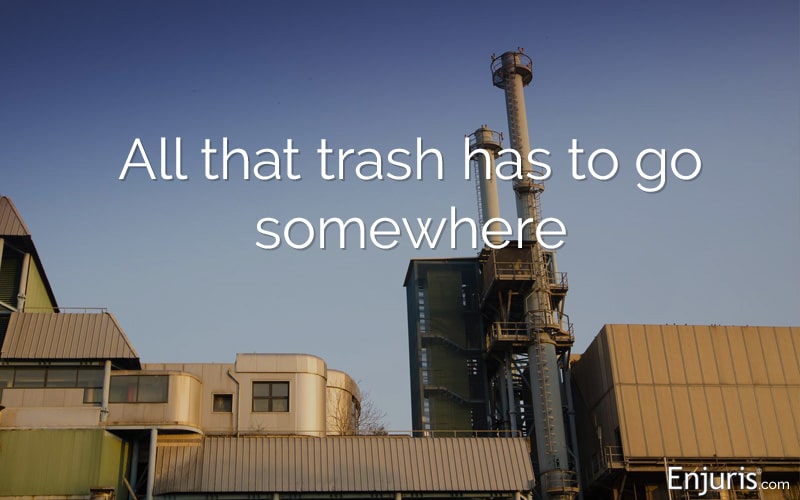
Pollution lawsuits are important tools for protecting our environment. They can result in large fines for the guilty parties and often lead to changes in the law.
In this blog post, we’ll discuss five of the most famous pollution lawsuits filed in the United States. We’ll see who was involved, what happened, and how much money was paid in damages.
BP Deepwater Horizon Oil Spill: United States v. BP Exploration & Production (2010)
On April 20, 2010, the Deepwater Horizon drilling rig experienced a catastrophic failure in the Gulf of Mexico. A sudden release of natural gas, trapped by a recently installed concrete core intended to secure an oil well for future use, forcefully made its way up the riser. This riser—a conduit connecting the ocean floor's wellhead equipment to the surface drilling setup—channeled the gas upward, where it ignited, triggering a massive explosion followed by an intense fire.
Emergency protocols were immediately enacted, but the severity of the situation was overwhelming. Roughly 36 hours after the explosion, the rig submerged into the ocean depths. The tragic incident claimed the lives of eleven workers, both during the initial upheaval and the fire that ensued.
In the disaster's wake, an unstoppable flow of oil began, with approximately 4.9 million barrels contaminating the Gulf of Mexico. The spill had a far-reaching environmental and economic impact, severely affecting the livelihoods of people in nearby areas.
The subsequent legal proceedings culminated in BP consenting to an unprecedented settlement. The resolution involved a staggering $20.8 billion payout, representing the largest environmental damage settlement in the history of the United States.
The Exxon Valdez Disaster: Baker v. Exxon (1989)
Years before Deepwater Horizon, there was the Exxon Valdez disaster, a stark example of how human negligence can precipitate environmental tragedy.
In Prince William Sound, Alaska, the Exxon Valdez, an oil tanker, collided with a reef. The collision tore open the vessel's hull, unleashing millions of gallons of crude oil into the pristine waters. The scale of environmental damage was unparalleled, severely affecting wildlife and sullying the natural landscape. Compounding this ecological disaster was the socioeconomic impact on the local community. Predominantly, Native Alaskans faced profound disruption as the spill dealt a crippling blow to the fishing industry.
The subsequent legal battles were complex, ultimately centering on the case of Baker v. Exxon. Exxon was initially slapped with a staggering $5 billion in punitive damages. However, after several appeals, the United States Supreme Court dramatically reduced this sum to $507.5 million.
There was, however, a silver lining. The Exxon Valdez disaster paved the way for the Oil Pollution Act of 1990, a piece of legislation that works to prevent oil spills from vessels and facilities. Among other things, the Act mandates the cleanup of oil spills, designates the liable parties for cleanup costs and damages, and dictates specific operational protocols. It further created a trust fund for covering damages, cleanup, and removal expenses.
The Erin Brockovich Case: Anderson v. Pacific Gas and Electric Company (1996)
Popularized by the film Erin Brockovich, the legal battle against Pacific Gas and Electric Company (PG&E) was a classic David versus Goliath story. In the early 1990s, it was discovered that PG&E’s facility in Hinkley, California, had been contaminating the groundwater with hexavalent chromium, leading to a spike in serious illnesses and chronic conditions among residents.
In 1996, after contentious legal proceedings, PG&E settled with the affected residents for $333 million, one of the largest settlements ever paid in a direct-action lawsuit in U.S. history.
California personal injury attorney Tom Girardi, part of the legal team that sued PG&E, was disbarred and ordered to pay more than $2 million in restitution to his clients. Learn more about Tom Girardi’s fall from grace.
The Love Canal Tragedy: United States v. Occidental Chemical Corp. (1988)
Love Canal, a neighborhood in Niagara Falls, New York, became the poster child for environmental disasters in the late 1970s. Numerous families were exposed to toxic waste that was buried beneath their homes between 1920 and 1950, leading to alarming health issues and birth defects.
In 1980, President Jimmy Carter declared a federal emergency in the area, and residents were relocated.
The lawsuit, filed by the U.S. government against Occidental Chemical Corporation, resulted in a settlement where the company agreed to pay $129 million to cover the cleanup costs. This case was instrumental in the establishment of the Superfund program, responsible for cleaning up some of the nation’s most contaminated land and responding to environmental emergencies.
Flint, Michigan Water Crisis: In Re Flint Water Cases
The Flint water crisis is an infamous public health catastrophe that will be remembered as one of the most severe examples of environmental injustice and governmental malfeasance in the United States.
In 2014, in an attempt to cut costs, the city of Flint, Michigan, switched its water source from the treated Detroit Water and Sewerage Department water to the Flint River, a decision officials promised was temporary while a new supply line was under construction.
The switch was catastrophic, as the Flint River was highly corrosive and, without proper treatment, it eroded the aging pipes, leaching lead and other toxins into the water supply.
Residents immediately raised concerns over the water’s color, taste, and odor. Nevertheless, their voices were dismissed by city officials. By the time state and federal officials finally acknowledged the problem, the water had already poisoned a generation of Flint’s children.
The legal fallout was immediate. Residents, rightly outraged and fearing for their long-term health, filed a number of lawsuits. In 2020, the State of Michigan announced a monumental settlement that will pay $600 million to the victims of the water crisis.
As the five cases described here illustrate, pollution can have devastating consequences. If you believe you’ve been injured as a result of pollution, consider reaching out to an experienced personal injury attorney. Not sure if you have a case? Most initial consultations are free.
Residents Raise Health Alarms in Toxic Tort Cases Against Waste-to-Energy Plants
Florida is booming. But all its residents’ trash needs to go somewhere—and some people think the incinerators are harmful to their health.

